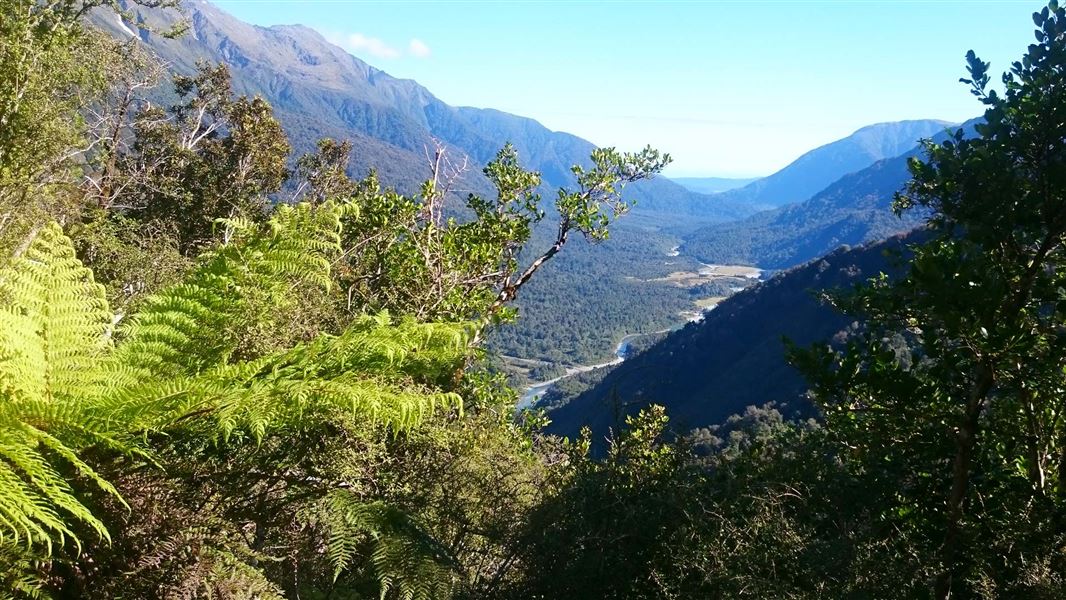
Located in Westland Tai Poutini National Park in the West Coast region
Introduction
The Karangarua and Douglas valleys offer hunters, trampers and mountaineers many challenging opportunities and rewards within the rugged backcountry environment of Westland Tai Poutini National Park.Stay safe in the outdoors
- Choose the right trip for you. Learn about the route and make sure you have the skills for it.
- Understand the weather. Check weather forecasts.
- Pack warm clothes and extra food. Check gear lists.
- Share your plans and take ways to get help. Share directly or use the Outdoor Intentions form or Plan My Walk. Take a distress beacon.
- Take care of yourself and each other.